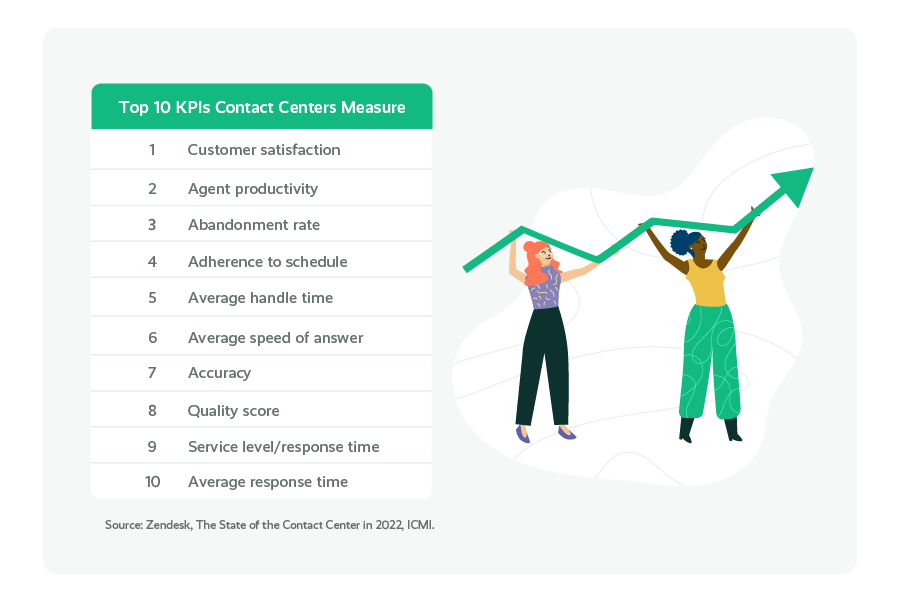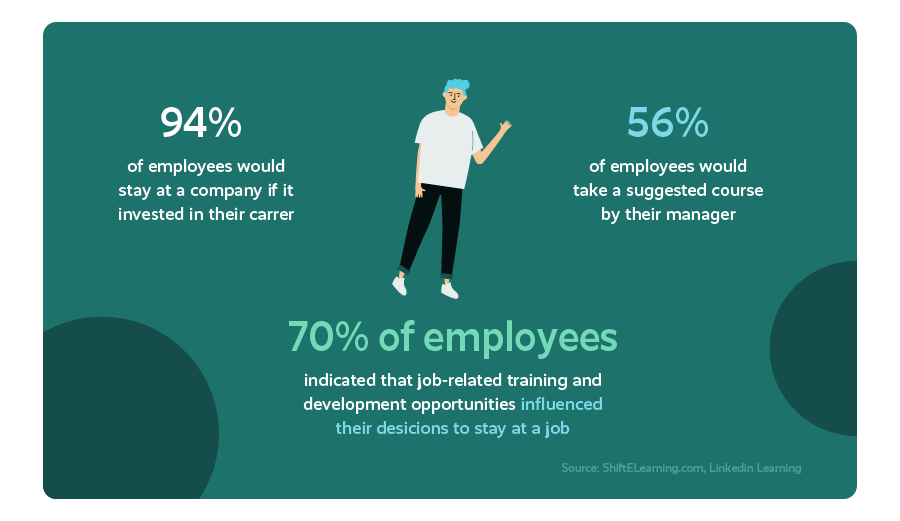Identifying And Cultivating Top Talent In Your Contact Center
In an economy that’s pitched more than a few curveballs over the last five years, retaining and growing a loyal customer base is consistently a winning business strategy.
As a contact center leader, the top agents you hire, train, and manage are the clutch players. They are among your organization’s most valuable assets, and you depend on them to deliver loyalty-building customer experiences every day, with every interaction.
Successfully cultivating top talent is a customer experience fundamental because it’s so closely tied to the overall success of your organization—in any economic climate. It should be among your key strategies and always part of your playbook.
Before you can cultivate top talent, though, you have to identify your top performers. Know who the strongest players are among your current employees so you can keep them on your team.
How Do You Identify Top Customer Service Talent?
Identifying top talent starts with the right key performance indicators (KPIs). Do the KPIs you use now to measure employee performance accurately reflect each agent’s real value? Do they reveal truly exceptional performance?
It may be time to take a closer look.
The wrong KPIs could be holding back your top performers from reaching their own professional goals for a wide range of reasons. First, if your agents feel their efforts aren’t accurately measured or noticed by leaders, it reduces engagement, negatively impacts job satisfaction, and weakens motivation to perform at the highest levels. It can also quickly become a costly talent acquisition problem.
Compounding the challenges, the KPIs used by many contact centers don’t match organizational goals or business goals, affecting your contact center’s overall performance.

Re-examine Your KPIs
For better results, choose KPIs that align with your customer support center’s goals. Get clear and honest about your real goals.
Are you trying to boost customer sentiment? Do you want to increase revenue through cross-selling? Do you want to improve overall customer experience? Your goals should guide your KPIs.
A 2022 ICMI study showed that the top two KPIs most customer support centers measure are customer satisfaction and agent productivity, respectively. However, those can be confusing for agents because, although they want to be productive, faster interactions are not always better for customer experience and satisfaction. In a 2022 Salesforce study, 78% of service agents said it was difficult to balance speed and quality.

More KPIs does not mean better KPIs, or, more importantly, better results. Focus on KPIs that measure and drive the outcomes you want most. Determine what you value most in customer experience and measure agent performance accordingly.
Correlate Your Productivity KPIs To Customer Experience
Ensure your productivity KPIs correlate to customer and agent experience. Then you’ll know the behavior you truly need from agents instead of relying on meaningless goals that don’t move the needle in any meaningful way.
Also, find ways to recognize and track positive, neutral, and negative customer sentiment in digital customer interactions. Used together, the right KPIs and customer sentiment analysis will help you more easily identify top agents.
But what about those agents who don’t rise to the top?
It’s Important To Know Who Your Lower-Performing Agents Are Too
It’s important to identify struggling agents and find ways to help and motivate them too. That’s because lower-performing agents have the potential to get better, and replacing them is an expensive process.
The right strategy will go a long way in improving the performance of struggling customer support agents and transforming them into top talent. Each group, or individual agent, may need a slightly different approach, but there are best practices for talent development initiatives that will deliver dependable benefits.
An overall commitment to employee development is the best way to cultivate top talent and all its benefits.
Benefits Of Talent Development Initiatives
Professional development and training programs create a culture of learning, which is attractive to top-performers. It keeps them engaged, challenged, and continually improving.
Talent development programs and ongoing opportunities for growth help cultivate top talent and deliver comprehensive benefits organization-wide, including:
- Greater agent satisfaction
- Fewer talent shortages
- Increased employee retention
- Decreased hiring costs
- Higher agent engagement
- Increased productivity
- More positive customer sentiment
- Better customer experience

What Are The Best Ways To Cultivate Top Talent?
What keeps individual agents motivated and continuously improving will vary. These six development initiatives, though, provide employees with opportunities to learn new skills, enhance their existing abilities, and advance their careers.
They’re a smart place to start building a strong culture of learning and increase engagement. Adapt them to your organization’s needs, and they’re likely to not only bring out the best in your current employees but also attract top talent in your recruitment process.
1. Your Leadership Matters
Gallup research has found development to be a key driver of employee engagement, starting with the manager or team leader. According to the research, managers are responsible for up to 70% of employee engagement, playing a critical role in talent development in your customer support center.
When contact center leaders show agents they’re interested in their growth and development, agents are measurably more motivated. In fact, the benefits of one-on-one development opportunities and regular check-ins with advice from leaders are two-fold: They provide individual development through continuous learning for both leader and agent.
As an informal mentorship program, this kind of approach to employee development fuels continual personal growth opportunities for high-performing agents. For customer service leaders, it’s an opportunity to constantly hone their interpersonal, decision-making, and communication skills, like active listening—boosting their own professional growth.
2. Build A Formal Talent Development Program And Plan
Combined with other aspects of talent development, like the informal culture of mentorship by managers, more formal training and development programs are important tactics for attracting and retaining top talent. These programs set agents up to succeed through employee development plans that ensure agents:
- Have opportunities to develop skill sets through continuous learning
- Are working where they can provide the most value and are happiest
- Grow in their current roles and advance in their career paths long-term
A well-crafted, formal talent development strategy typically includes a range of initiatives and programs, such as performance management, online learning, coaching and mentoring, job rotation, stretch assignments, manager training, and leadership development.
3. Offer Training Opportunities Through Coaching
There’s more than one way to effectively train agents. Job training doesn’t have to come only from managers or human resources trainers. One of the most effective forms of training is peer learning.
Consider allowing high-performing agents to coach peers. Pair them with newer or lower-performing agents for learning through observation and listening. It’s a cost-effective coaching technique, and it communicates to top-performers that their expertise and talents are recognized and valued.
This additional training fosters positive connections among agents. These connections increase engagement and improve employee satisfaction.
More traditional one-on-one coaching with a trainer is also a key component of job learning. Like peer training, one-on-one coaching is active learning that allows the trainer to participate in the trainees’ growth, offering advice and guidance along the way. This method works best when agents recognize that they are supported, want to take advantage of the opportunity for personal development, and clearly see its benefits.
4. Gamification: Sometimes A Contact Center Can Be All Fun And Games
Contact center gamification includes a range of tactics to incorporate friendly competition, recognition, and a sense of achievement. Making a typically repetitive and stressful job more fun is a smart way to engage, recognize, and reward customer support center employees.
Gamification breaks up the daily routine while promoting team collaboration. Remember to keep it focused on the right metrics. Gamification elements, such as leaderboards and badges, encourage consistent effort toward the most important metrics.
Also, allowing peers to recognize each other promotes a strong culture of teamwork. The gamification software Kahoot!, for example, creates game-show-type quizzes everyone can participate in, even remotely, using Zoom.
5. Accentuate The Positive
For contact center managers, one of the most important parts of the job is providing feedback. It helps agents improve performance and stay on track toward achieving goals. While constructive negative feedback is often necessary, positive feedback is just as important and needs its own focus.
The author of Be A Shortcut: The Secret Fast Track To Business Success, Scott G. Halford, sums up the need for positive feedback in Entrepreneur. “Positive feedback stimulates the reward centers in the brain, leaving the recipient open to taking a new direction. Meanwhile, negative feedback indicates that an adjustment needs to be made and the threat response turns on and defensiveness sets in.”
To elevate performance among top agents, regularly coach your CX team members on where they excel.

6. Communicate Well (And Often)
Finally, ensure your teams understand organizational goals and strategies. Invite them to offer input. Be clear about what success looks like. Listen to feedback about what’s working and what isn’t working. Then, demonstrate that you’re taking action to address issues.
The More You Know, The Better You’ll Do
Successfully cultivating top talent is a winning customer experience strategy in any economic climate.
Agents, especially younger ones, seek opportunities for personal growth and skill enhancement. Investing in professional development programs demonstrates you value their growth and see a long-term future with them. It’s a fast track to better employee retention, engagement, and satisfaction—all key contributors to positive customer experience.
The more you know about how to keep and develop top talent, the greater benefit you’ll realize. Download our ebook, Celebrating Success In The Contact Center: Top Tips for Engaging and Motivating Agents, and visit our resource center to learn more about cultivating top talent to improve the experience delivered at your contact center.







